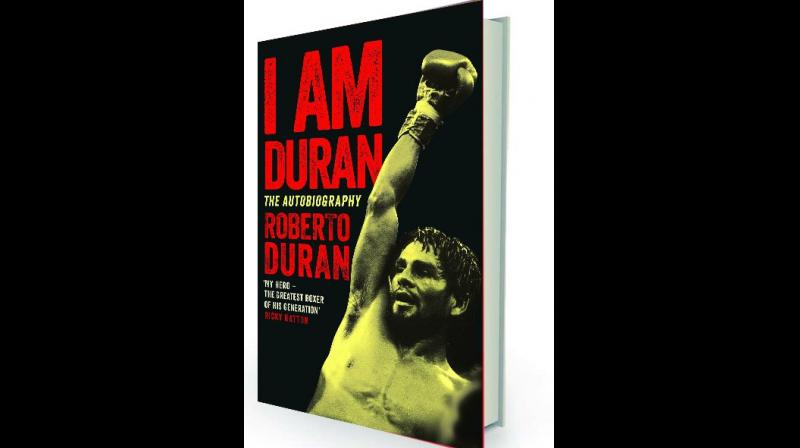Duran: The legend full of pride

In the opening pages itself, Roberto Duran states his drivers up front: what he loves most — “eating, drinking, having a great time”, and what he fought for — “the joy of being respected by the people I care about”. The Panamanian boxer, widely regarded as one of the greatest of all time, tells his rags-to-riches story under a spell of pride. He believes that he is respected and has achieved the glory and wealth he had set out to achieve. What’s on offer in I Am Duran: The Autobiography, then, are anecdotes of the boxer’s proud achievements (world titles in four weight classes – lightweight, welterweight, light middleweight and middleweight) and excuses for the painful defeats over a five-decade long professional career, from 1968 to 2001. Only twice, in 1985 and 1990, did Duran not punch anyone inside the ring. That’s his legacy, matched by only one other professional boxer before him, Jack Johnson.
Duran, the pelao (kid) from Panama’s El Chorrillo neighbourhood, was fighter long before he stepped into the ring. Abandoned by his father when he wasn’t even two, and a mother who was “not always around”, Duran raised himself and his family of siblings through street jobs: his first also became the school for his first English word — “shoeshine”. When the doors to the boxing world were thrown open, first to the street-kid fighter, all of 8, who was ready to take on experienced hands, and then to the teenager of 16 making his professional debut, it was as if an “animal” was let loose, not quite like Wala, Duran’s pet lion who mostly lies dormant, but a roaring beast whose powerful punches would later brand him “Manos de Piedra” (Hands of Stone).
The chronology of events in Duran’s life may, at times, appear disjointed. But what looks like an assemblage of incidents plucked from the memory at whim, and narrated with the ferocity that makes the protagonist look like he could be sitting through a pre-fight press conference, the sense that maintaining the timeframe was going to be a tough task never leaves the reader.
But it’s always the pride, or the absence of fear that his actions could be judged, that comes to the rescue during defeated moments — the ones where expectations from his long-time associates, personal trainers, even the devoted public, were badly crushed when “I needed them the most”. The national hero couldn’t believe that one loss could take away years of glory even before he had taken off his gloves.
But it wasn’t a defeat. It was, as the history remembers it, Duran’s decision to “quit”, say “No Mas”, in the eighth round of the November 25, 1980 rematch against Sugar Ray Leonard, whom he had beaten only five months ago. Did he really quit, say the phrase that ran synonymous with his professional career, never leaving his side, or Leonard’s for that matter, and which set off arguably the most exhaustive debates in the history of this sweet science?
“I never said that (No Mas),” Duran writes, and recalls mumbling to himself, ‘No sigo’, which loosely translates to “I’m not going to continue.” The boxer credits broadcaster Howard Cosell for the phrase that he says was never spoken inside the ring. But the mystery surrounding the incident may never really get settled. And Duran understands that, and therefore quickly shifts focus to his victories, partying, moments of fun, where lie enough substance to feed his pride. But if the rise from the fall contains no-holds-barred assessment of the “legend” by the legend himself — “Never mind the victories. Look at all the accolades as well” — the fall from the rise, too, is told with the same gusto. “I was a great boxer,” he says in no uncertain terms, and is in no doubt about his legacy out of all the Four Kings — besides Leonard and himself, Marvin Hagler and Tommy Hearns — being “the highest”.
It demands, then, attention as to when, and how, such illustrious careers effectively come to an end. Duran’s was preceded by “a bad feeling”, and followed by a death that lasted 30 seconds. If it wasn’t for that trip with his son to Argentina in October 2001, when Duran found his ribs, and thus his career, mangled in a crash so bad that news about the boxer being dead spread like wildfire, maybe, one odd day, you could still learn that the Hands of Stone, now past middle age, have returned to the gloves.
But the accident indeed confirmed his retirement, not leaving anything to chance, or to his spur-of-the-moment announcements. While declaring that he was calling it a day, Duran made it clear he won’t be a sitting duck at home, but sweat it out in the gym so that when the post-retirement accolades arrive, he isn’t “all fat like Maradona”.

